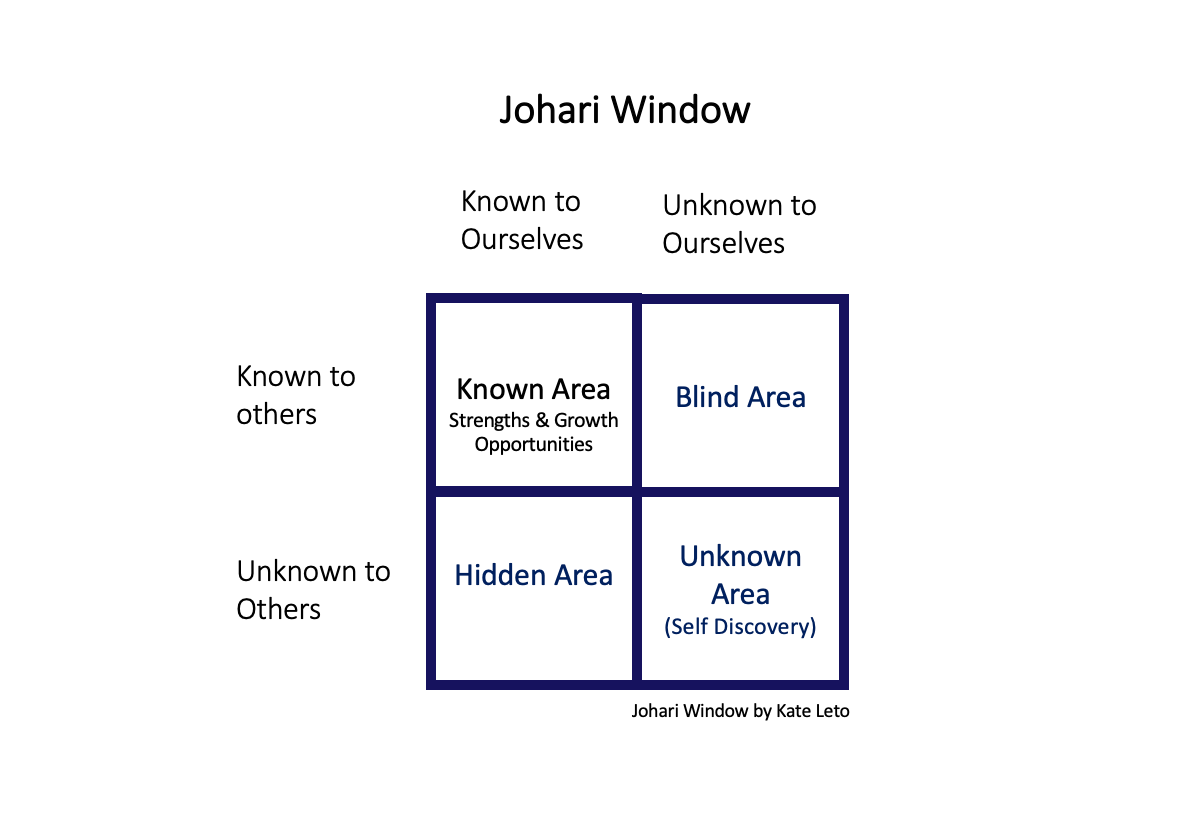Unlocking Your Potential
Using 360 Feedback to Identify Blind Spots and Grow as a Leader
While 360 feedback is a powerful tool for identifying blind spots and increasing self-awareness, it can be overwhelming to receive raw feedback without any context or guidance for interpretation. When that happens - and it often does - there’s a very human tendency to disregard the feedback, and put it aside until review time comes around again, ultimately leading to no real progress.
Author and executive coach Marshall Goldsmith has noted that feedback consistent with our self-image is more likely to be accepted, while feedback that is inconsistent is often rejected. The challenge is to turn raw feedback into something actionable that aligns with our self-concept.
And that’s not an easy thing to do. As I’ve talked about in a previous article on self awareness, our knowledge and understanding of self is built on both internal and external factors.
Internal self-awareness is what most people think of when they hear the term - an internal assessment and realisation process that is mostly silent and mental. To build internal self-awareness, we tend to lean into self-reflection, journaling, meditation, coaching or therapy that can help us to conduct a deeper study of self.
But it’s equally crucial to develop external self-awareness, which assesses your impact on the world around you. In our working context that might include how your behaviour and actions impact team members, stakeholders, managers, and yes, even your customers.
Receiving 360 feedback can be the intersection of internal and external; where our version of ourselves comes face-to-face with how others see us.
To help you process the feedback, after you’ve had time to read through all the comments, grab a pen and paper and write down your response to these questions:
What are your strengths? Write down three.
What are your opportunities for growth? Write down three.
Which opportunity do you want to focus on now?
How can your strengths help you make the most of your opportunity for growth?
What is the first step that you can actively take? Make sure it’s something that’s within your control and not dependent on others. Also, notice that this is just a first step. Start small.
How will you know that you’re making progress? What are the guideposts that you’ll look out for?
How will you know you've accomplished your goal? What will it look and feel like?
Work through all three of the growth opportunities that you identified and schedule a time in your diary to check in on your progress. Better yet, share your new action plan with someone that you can check-in with regularly.
The Johari Window
Another tool to try out when processing 360 feedback is the Johari Window, a visual concept created by American psychologists Joseph Luft and Harrington Ingham in 1955. (In case you didn’t pick-up on it, their combined first names give us Johari.)
This approach helps to build self-awareness from feedback based on what we identify as known and unknown about us by ourselves and others. As you can see in the diagram below, the “window” is made of four areas:
Known Area: What is known by ourselves and others. This could be about our strengths or growth opportunities. Internal and external self awareness are both present.
Blind Area: What is known by others, but not known by ourselves. This is where your blind spots live. Our internal and external self awareness is out of whack.
Hidden Area: What’s known to ourselves, but not known to other. We could think we’re really good at something, but our colleagues aren’t aware. Perhaps this is where your internal self awareness isn’t matching your external.
Unknown Area: Representing a space for self discovery and fresh challenges. What do you want to explore next? What new challenges do you want to take on?
Start by mapping the strengths and growth opportunities that you identified from your 360 feedback into the areas.
Then, it’s all about creating an action plan with the intention of eventually moving things into the Known Area. Some actions to consider:
Known Area: Even if it’s known, doesn’t mean there’s still not actions to take. Think about a personal development conversation with your manager or colleagues. How can you continue to build on your strengths and find support and development for your growth opportunities?
Blind Area: There are opportunities and challenges living in here that you’re not aware of. Start to make them more tangible by, you guessed it, asking for more feedback on your blind spots. Seek out examples and details - you need real context so that you can understand how to move it from your Blind Area to Known.
Hidden Area: How can you share this trait or superpower with others? Is it something you can mention when you’re introducing yourself and the work you do? Or, is it a reminder to be more open when building relationships with colleagues and partners?
Unknown Area: This is my favourite area. It’s a reminder that there is still much more to learn and explore. Put on your growth mindset and get going!
Ideally, a manager or coach is available to help you process 360 feedback. But when that’s not possible, before you put the feedback in the virtual (or real) dustbin, try one of these exercises out and let me know how you get on!
Subscribe to Product Leadership Essentials
Sign-up to my email newsletter to learn more about how to better understand and build your authentic Product Leadership skills.


